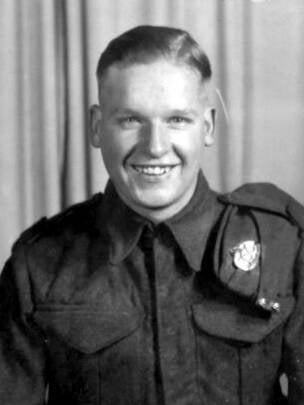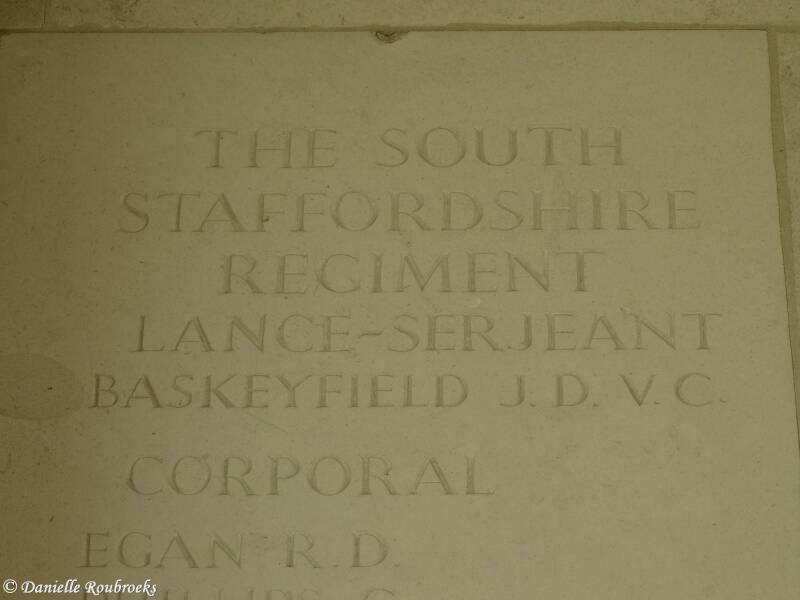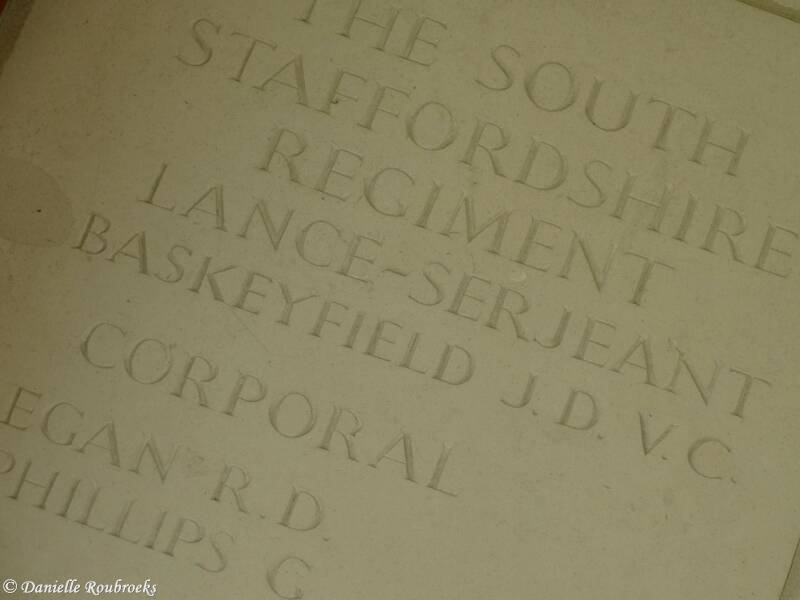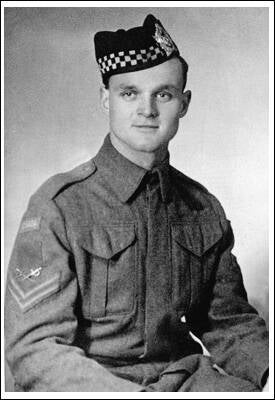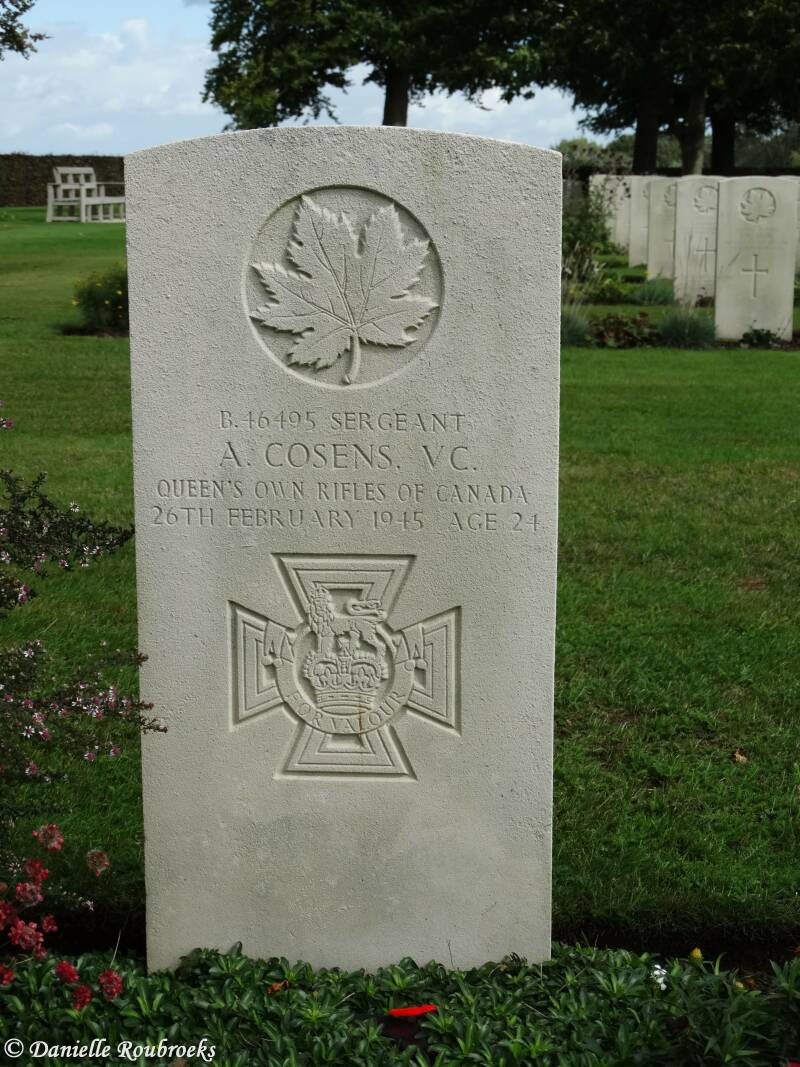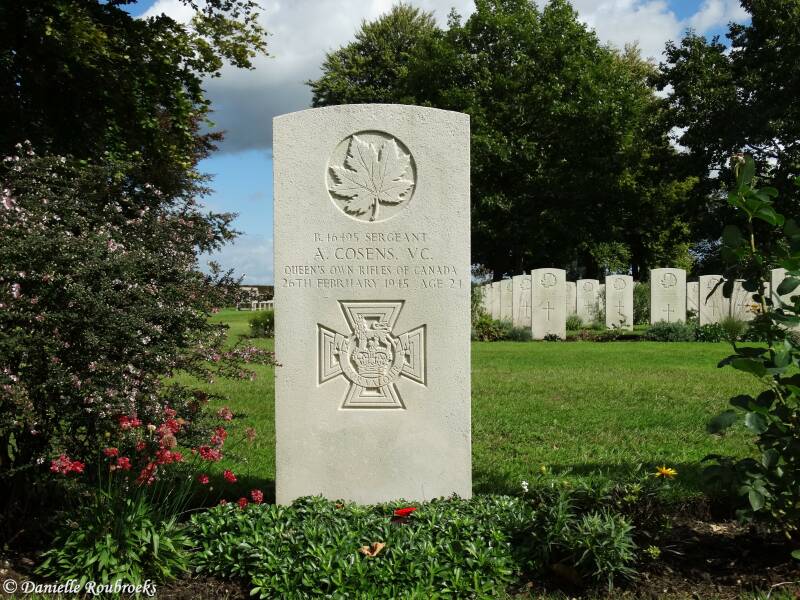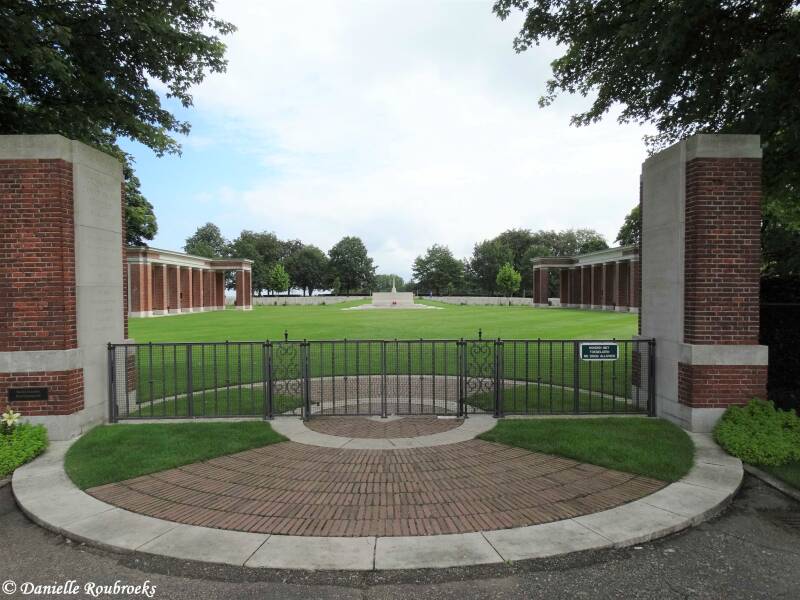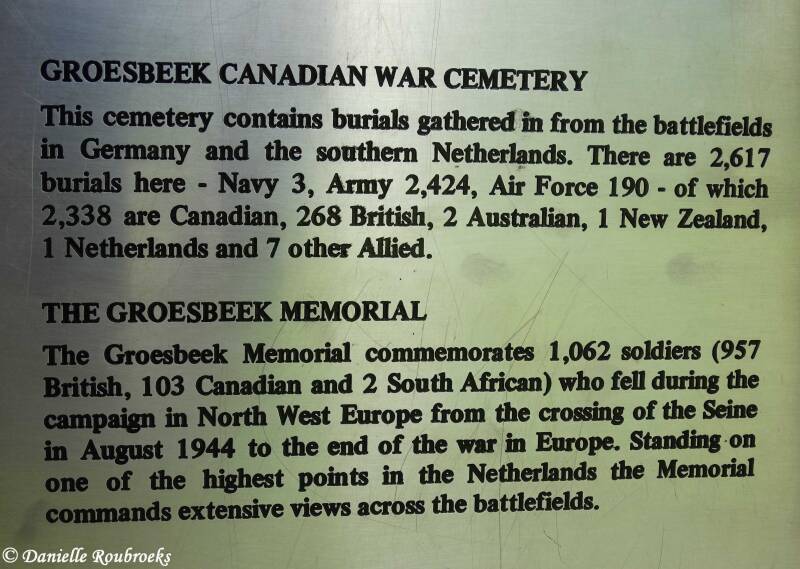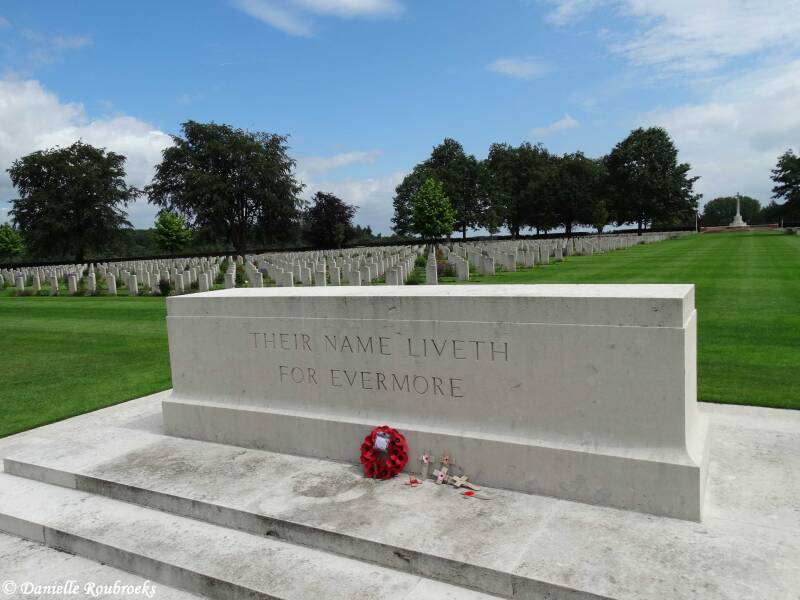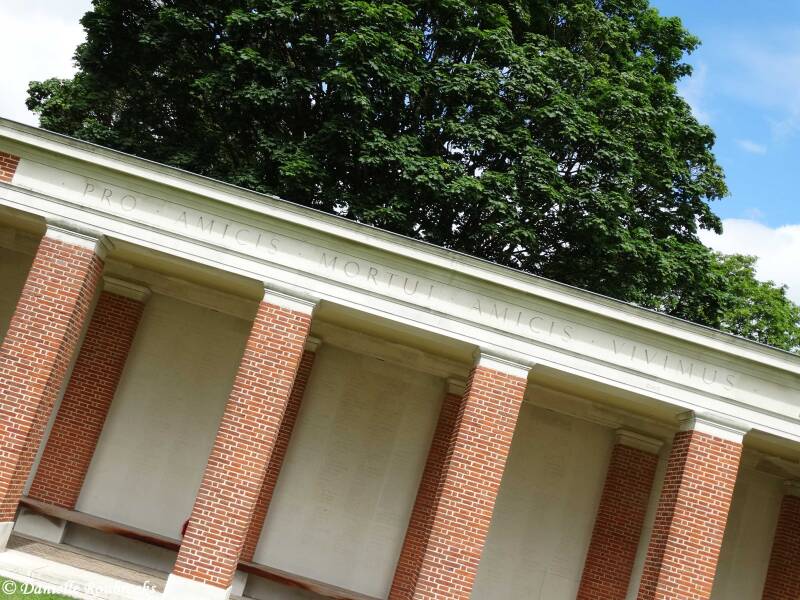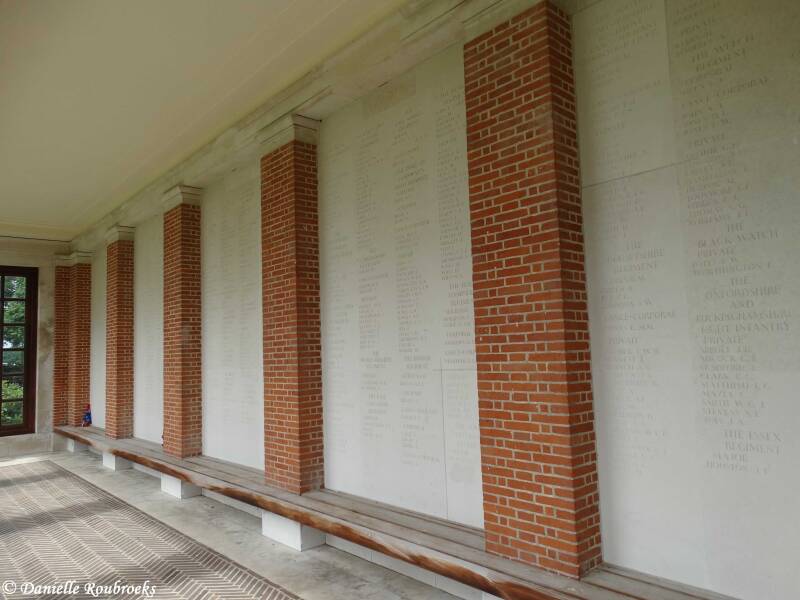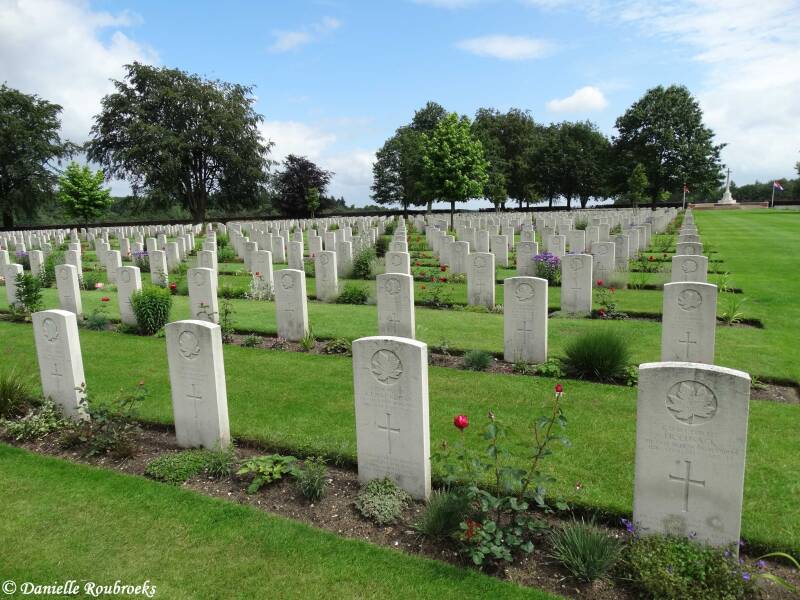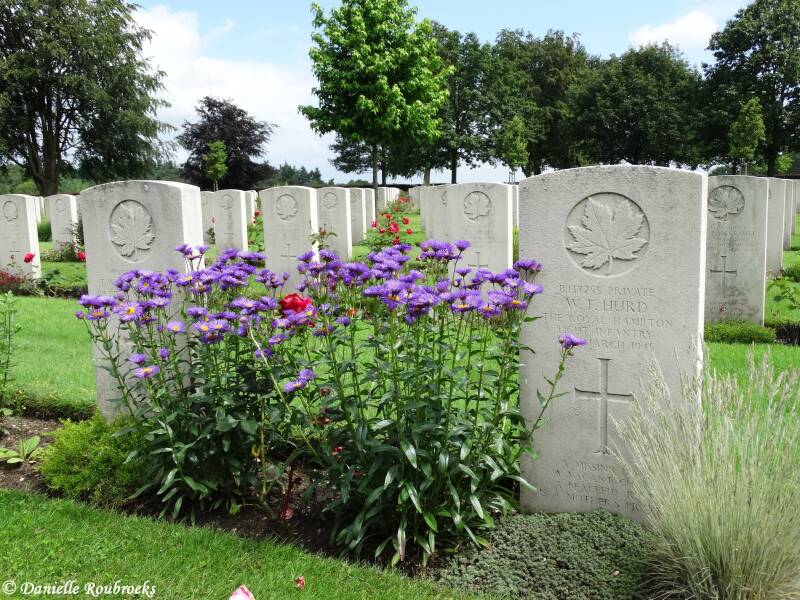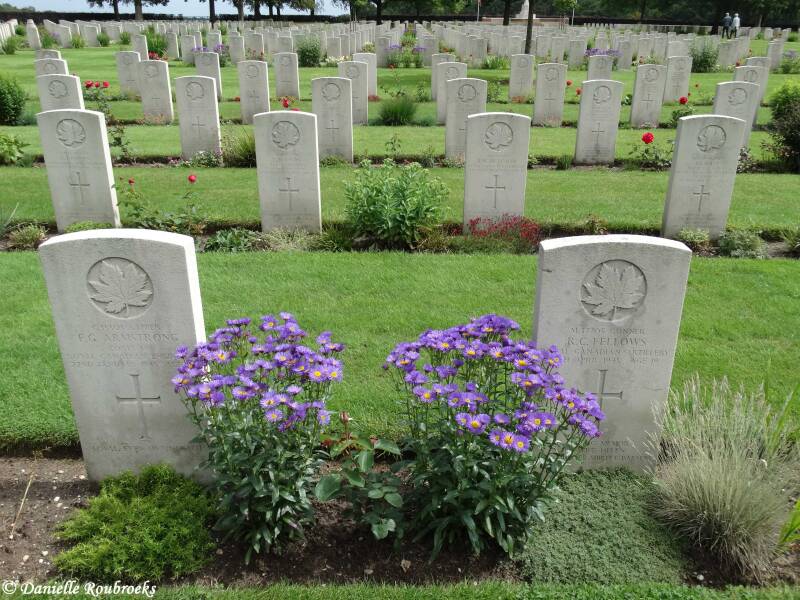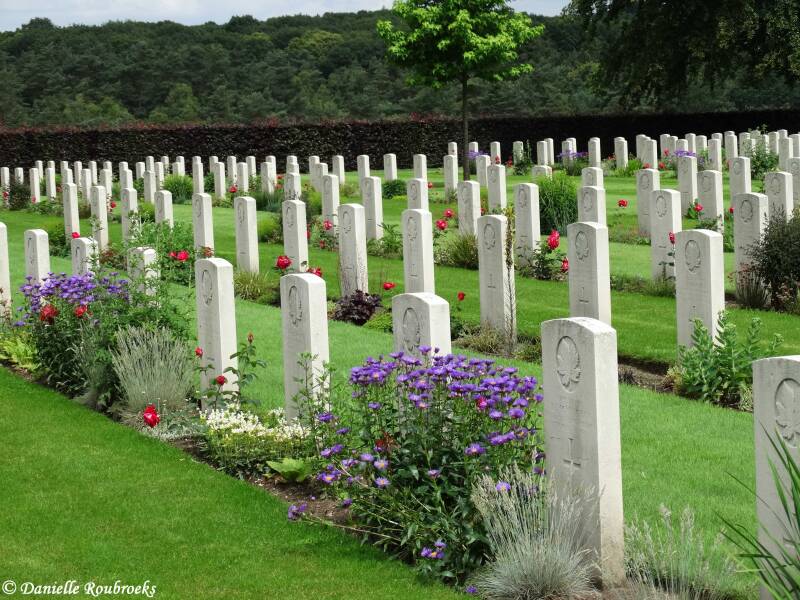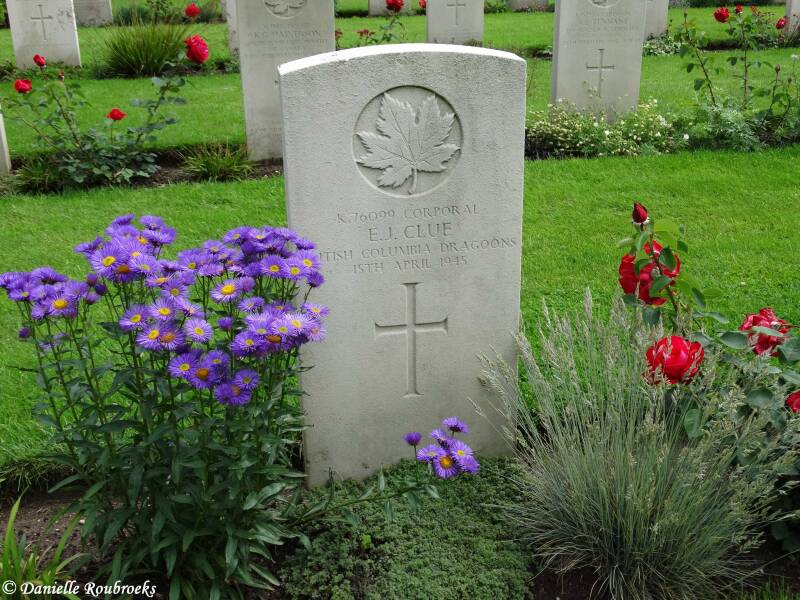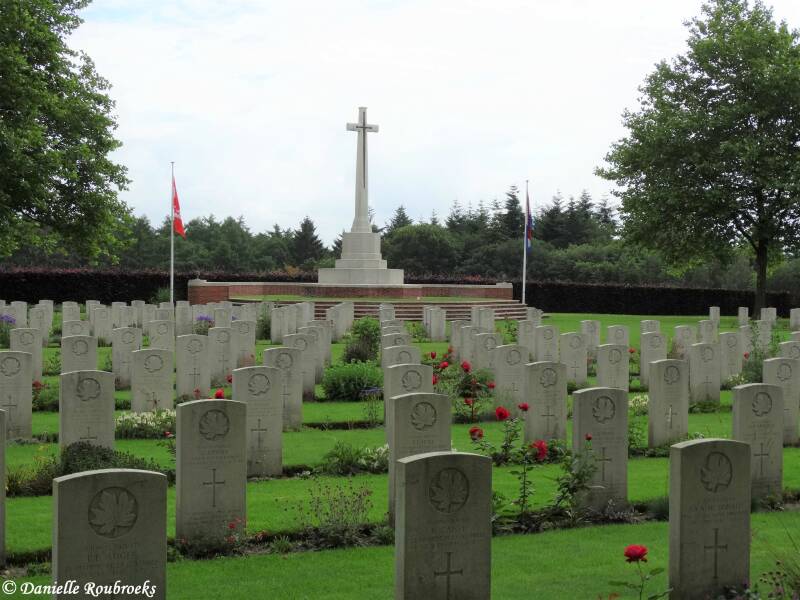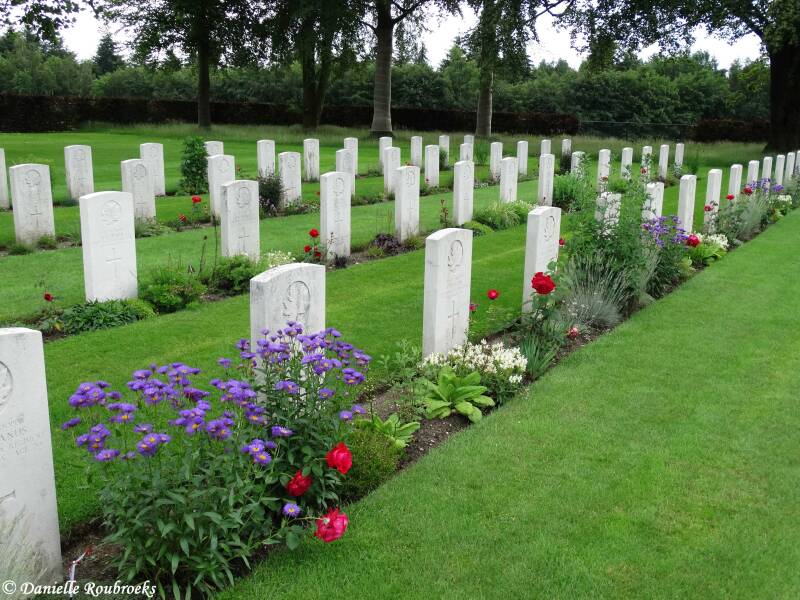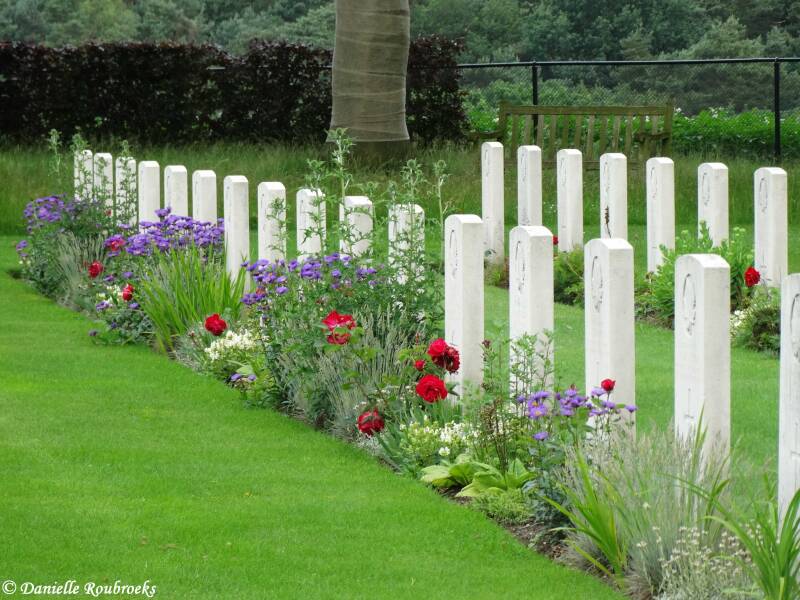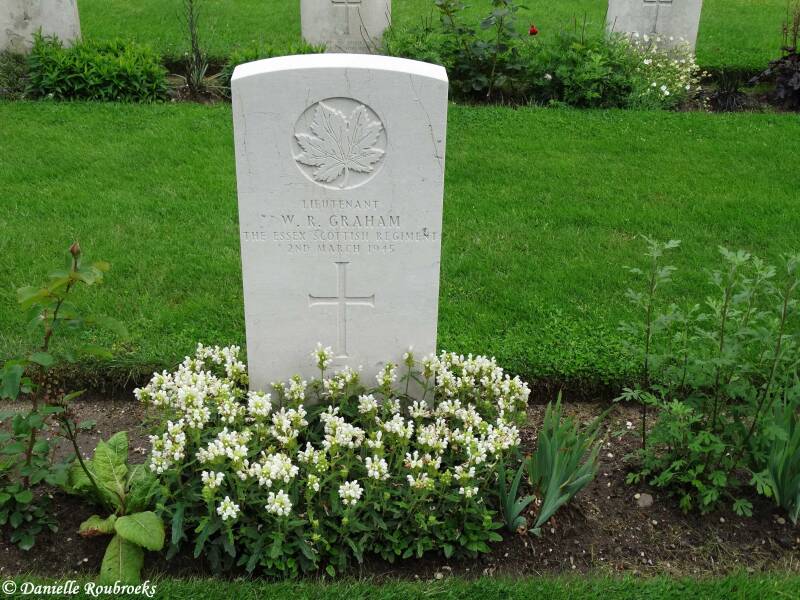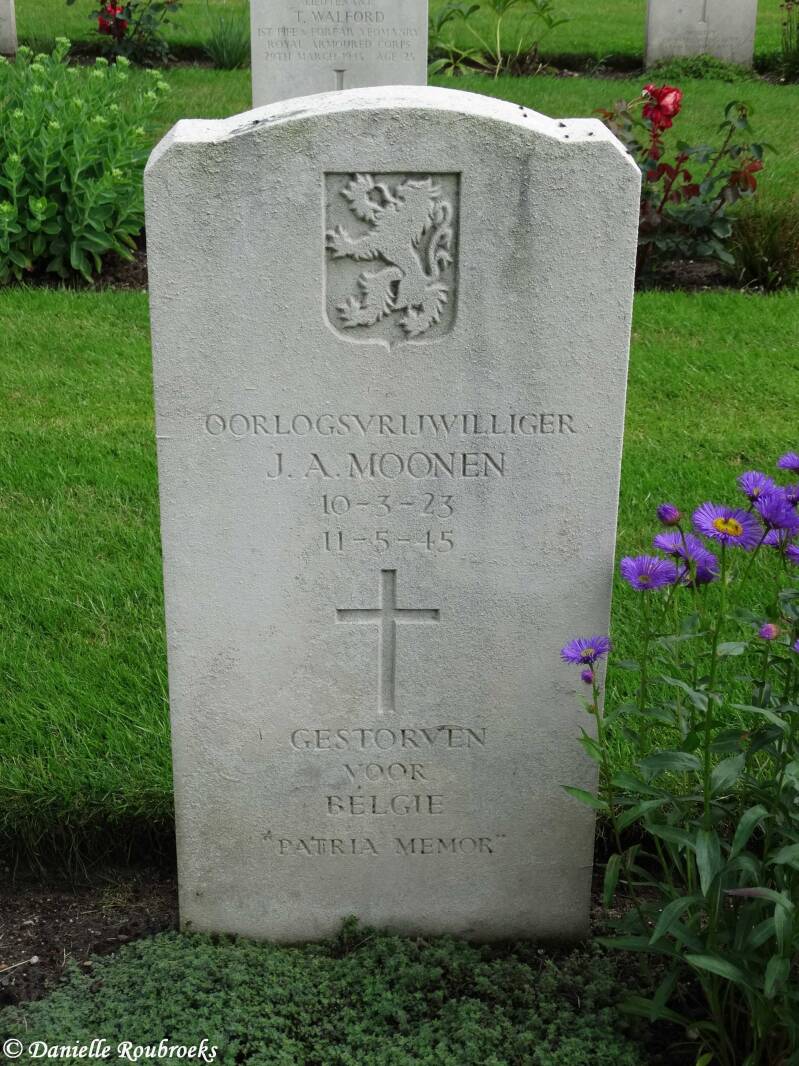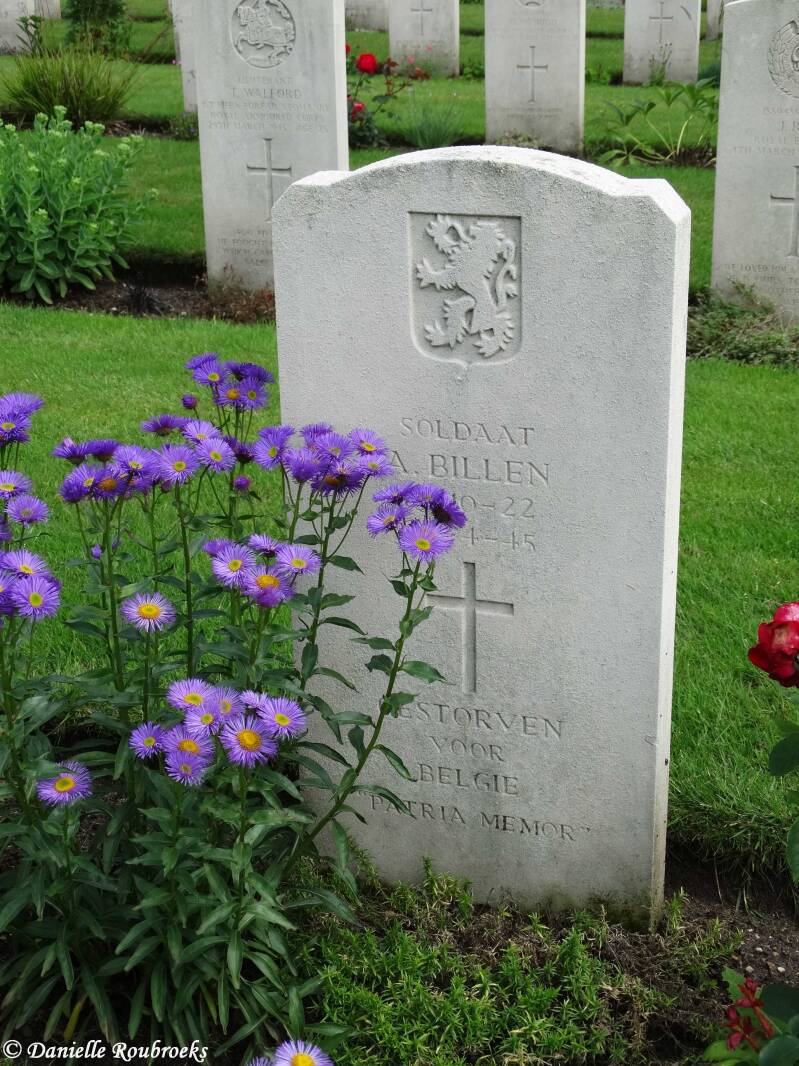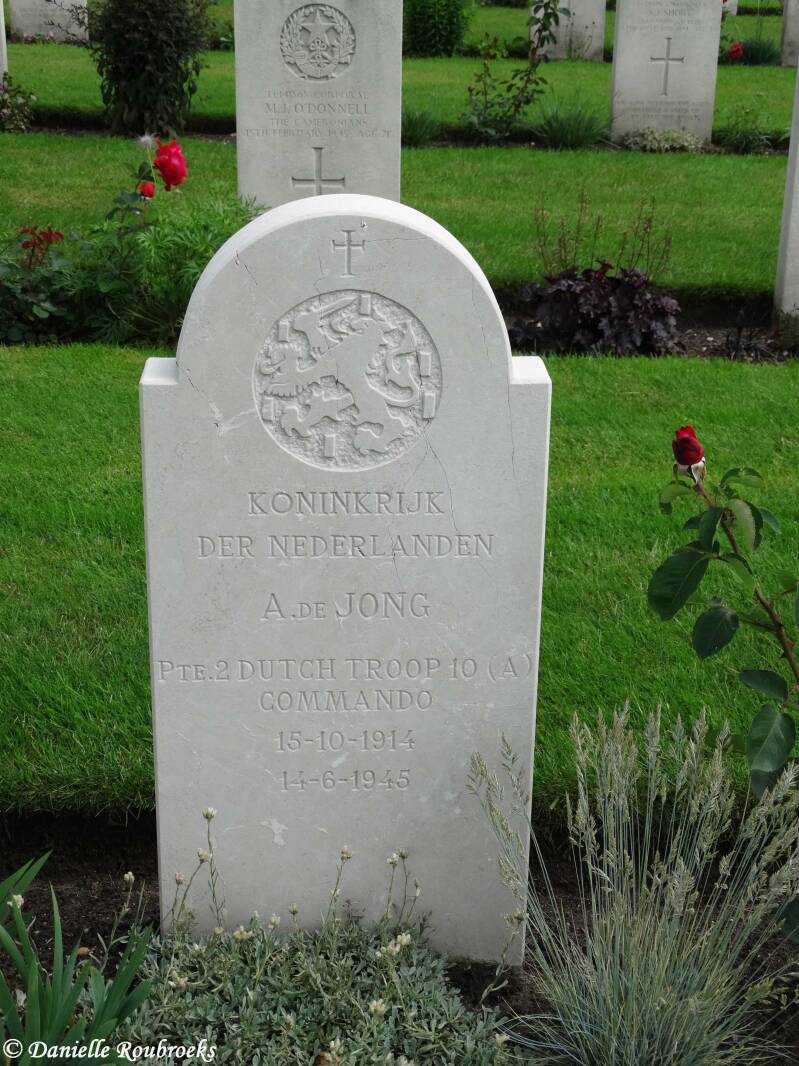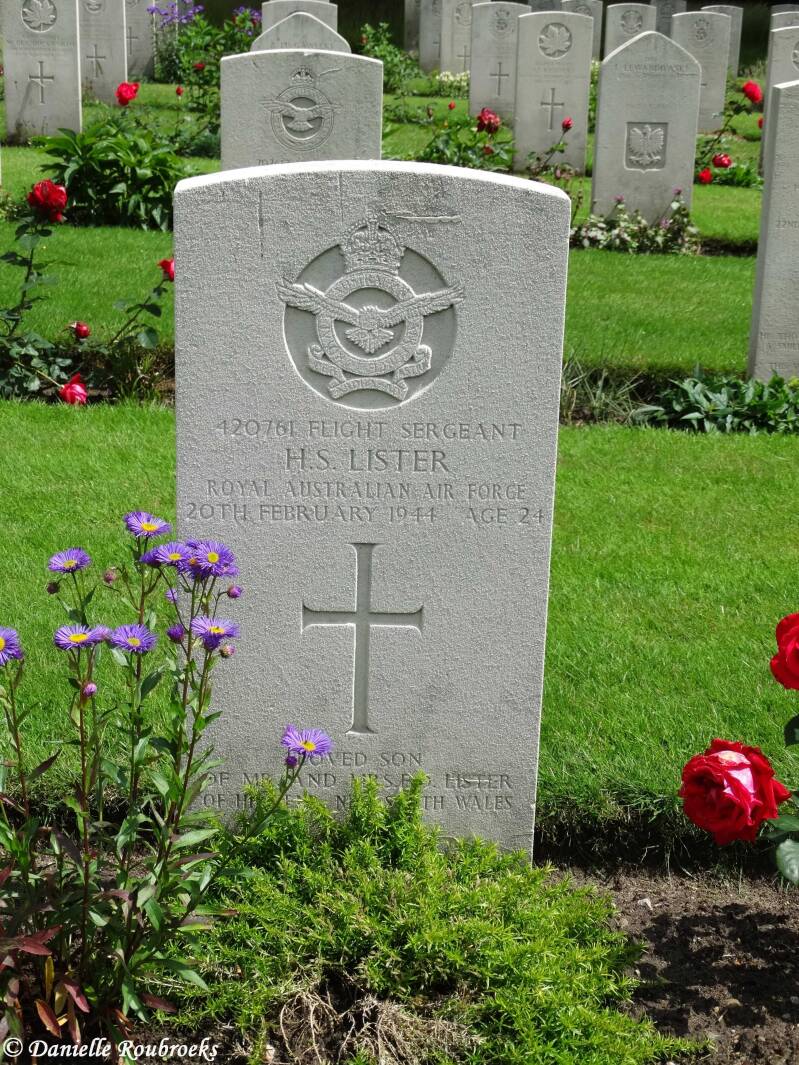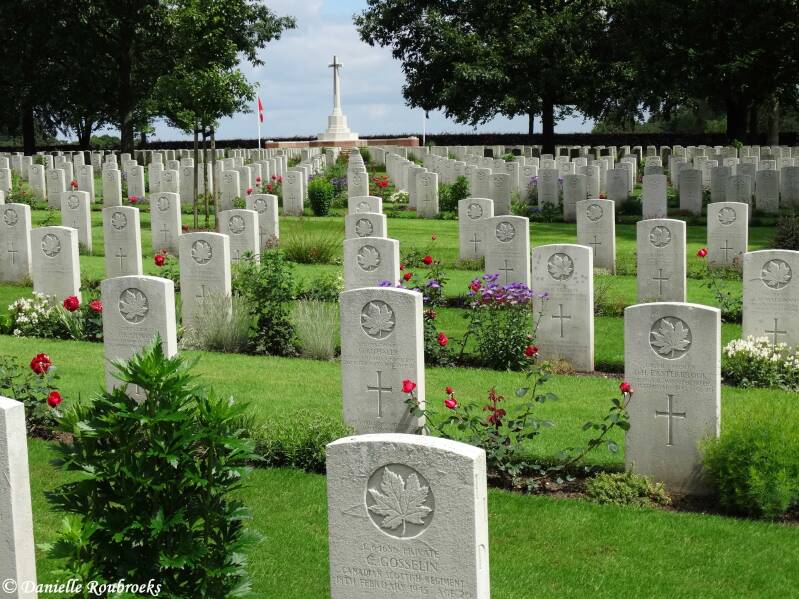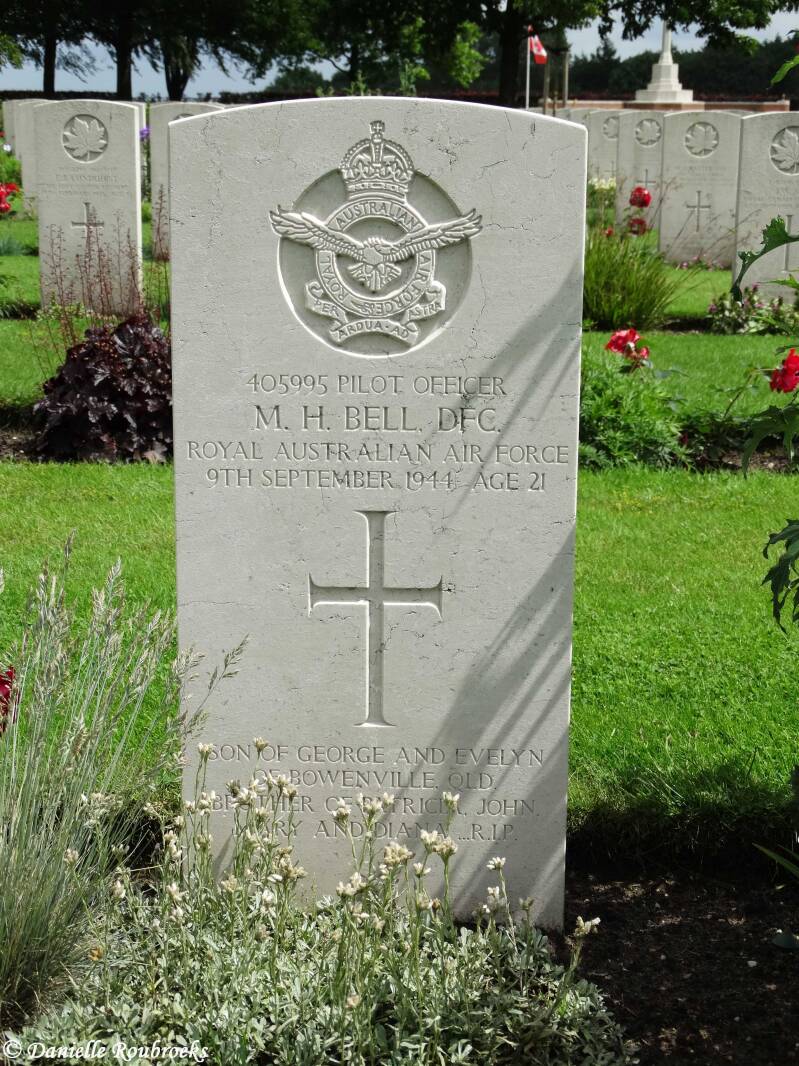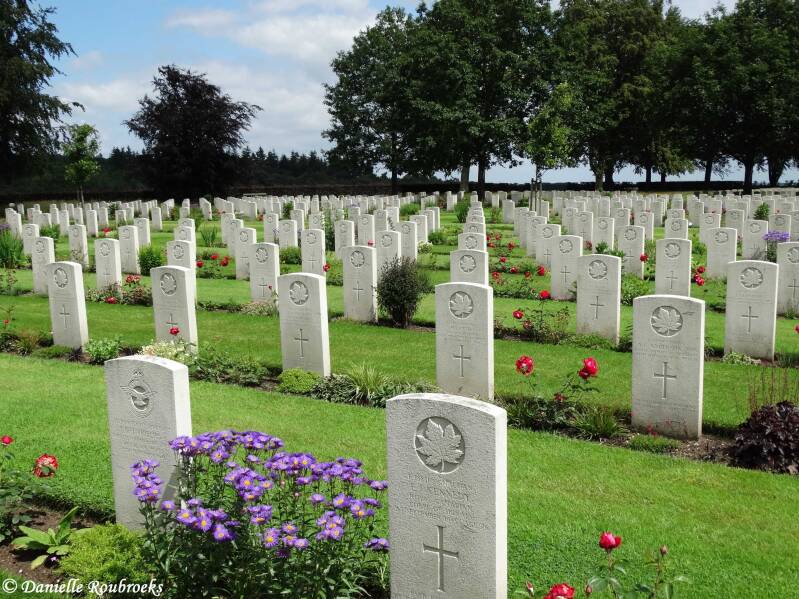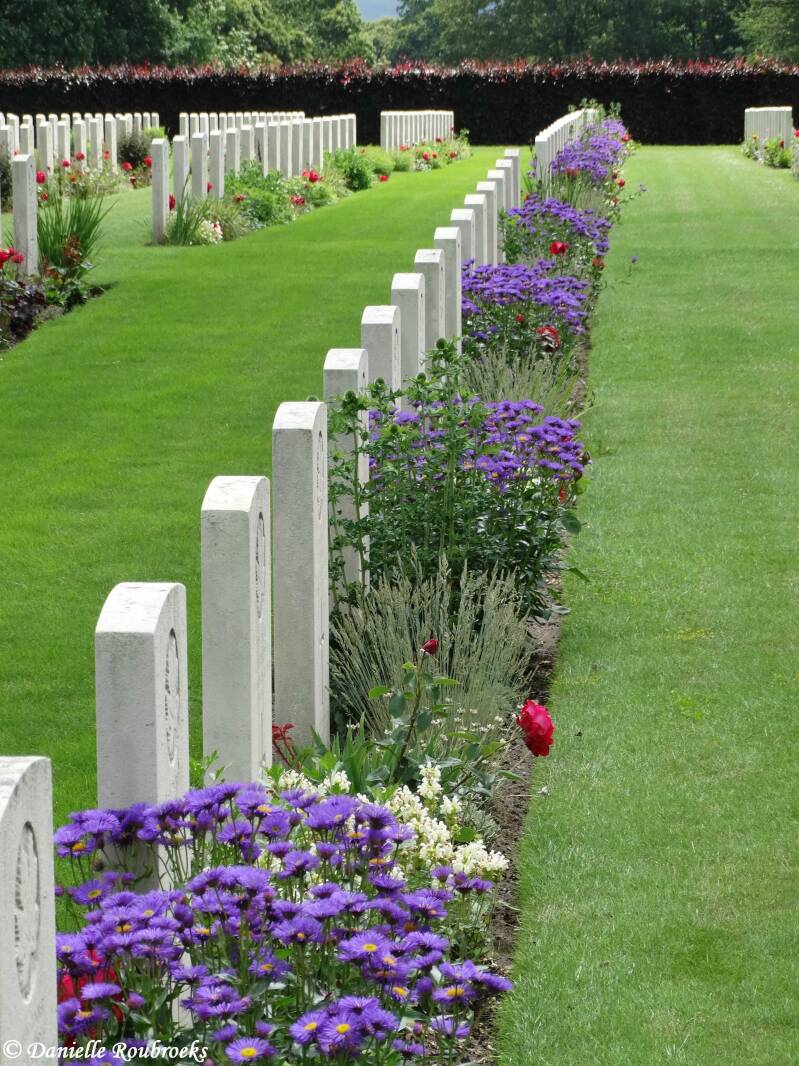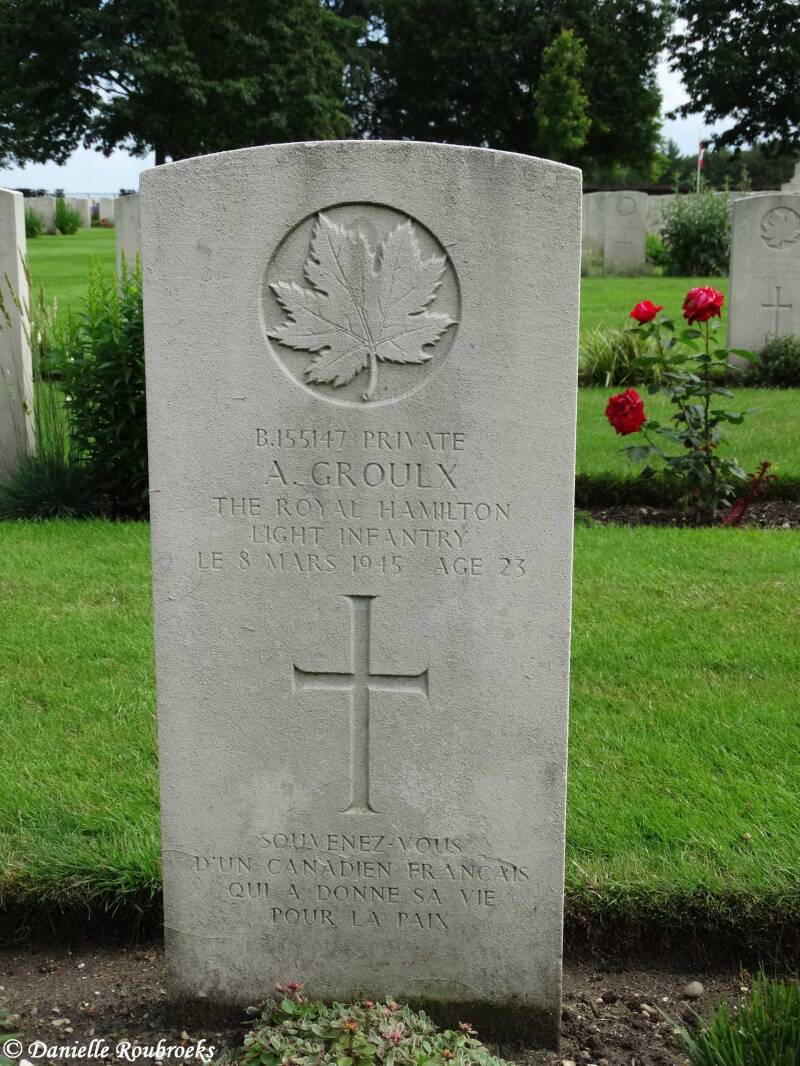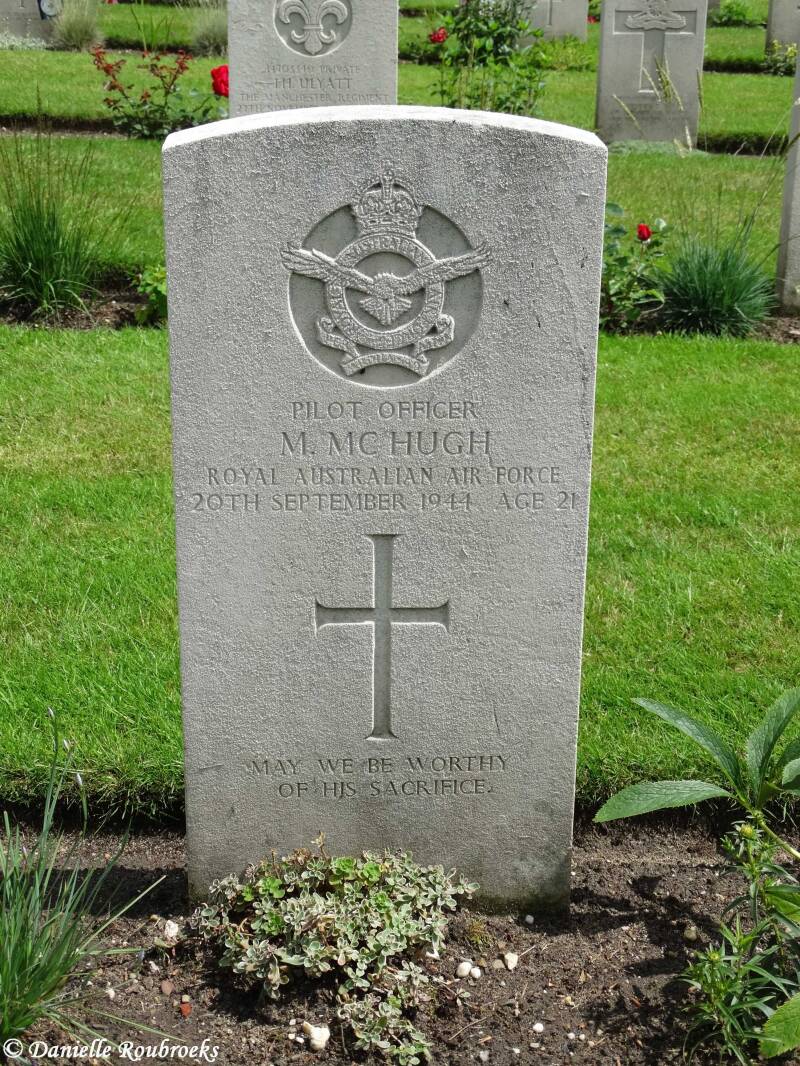Groesbeek Canadian War Cemetery & Memorial
Historical Information (Source: CWGC)
Allied forces entered the Netherlands on 12 September 1944. Airborne operations later that month established a bridgehead at Nijmegen and in the following months, coastal areas and ports were cleared and secured, but it was not until the German initiated offensive in the Ardennes had been repulsed that the drive into Germany could begin. Most of those buried in Groesbeek Canadian War Cemetery were Canadians, many of whom died in the Battle of the Rhineland, when the 2nd and 3rd Canadian Infantry Divisions and the 4th Canadian Armoured Division took part in the drive southwards from Nijmegen to clear the territory between the Maas and the Rhine in February and March 1945. Others buried here died earlier or later in the southern part of the Netherlands and in the Rhineland. The cemetery contains 2,610 Commonwealth burials of the Second World War, and nine war graves of other nationalities.
Within the cemetery stands the GROESBEEK MEMORIAL, which commemorates by name more than 1,000 members of the Commonwealth land forces who died during the campaign in north-west Europe between the time of crossing the Seine at the end of August 1944 and the end of the war in Europe, and whose graves are not known. The CEMETERY and MEMORIAL were designed by P.D. Hepworth.
Cemetery
Served with
- Canadian (2331)
- United Kingdom (256)
- Australian (3)
- Belgian (3)
- Polish (2)
- Dutch (1)
- New Zealand (1)
- Russian (1)
Served in
- Army (2410)
- Air Force (185)
- Navy (3)
Memorial
Served with
- United Kingdom (921)
- Canadian (98)
- South African (2)
Served in
- Army (1021)
VICTORIA CROSS
Lance Serjeant John Daniel BASKEYFIELD - 5057916 - 2nd (Airborne) Bn. South Staffordshire Regiment
Died 20 September 1944 Age 22
Country of Service: United Kingdom
Awards: Victoria Cross
Citation
The citation in the London Gazette of 23rd November, 1944, gives the following details : On 20th September, 1944, during the Battle of Arnhem, Lance-Sergeant Baskeyfield was the N.C.O. in charge of a 6-pounder anti-tank gun at Oosterbeek. During the early stages of a heavy enemy attack, the crew commanded by this N.C.O. were responsible for the destruction of two Tiger tanks and at least one self-propelled gun, thanks to his coolness in allowing each tank to come well within 100 yards of his gun before opening fire. Lance-Serjeant Baskeyfield was badly wounded and the remainder of his crew were either killed or severely wounded, he refused to be carried away from his post, and when the attack was renewed he manned his gun alone and fired round after round until his gun was put out of action. His activity was the main factor in keeping the German tanks at bay, and his example and his courage were responsible for keeping together and in action the surviving men in his vicinity. When his gun was knocked out, he crawled to another nearby which was left without a crew, and succeeded in putting out of action another self-propelled gun before being killed. Lance-Serjeant Baskeyfield's supreme gallantry is beyond praise. During the remaining days at Arnhem stories of his valour were a constant inspiration to all ranks.
Grave Reference: Panel 5.
(Source: Wikipedia)
Sergeant Aubrey COSENS - B/46495 - 1st Bn. Queen's Own Rifles of Canada, R.C.I.C.
Died 26 February 1945 Age 24
Country of Service: Canadian
Awards: Victoria Cross
Citation
The citation in the London Gazette of 18th May, 1945, gives the following details: In Holland, on the night 25/26th February, 1945 the 1st Battalion The Queen's Own Rifles of Canada attacked the hamlet of Mooshof. Sergeant Cosens' platoon, with tanks in support, had as their objective enemy strong-points in three farm-buildings. They were twice beaten back and were then fiercely counterattacked. Their casualties were heavy, including the platoon commander killed. Sergeant Cosens assumed command of the few survivors of the platoon, and placed them so as to give him covering fire while he crossed open ground to the one remaining tank and directed its fire. After a further counter-attack had been repulsed, Sergeant Cosens ordered the tank to attack the three farm-buildings, the remaining men of his platoon following in close support. He himself entered the three buildings in turn, alone, and killed or captured all the occupants. Immediately afterwards he was shot by a sniper, and died almost instantly. His outstanding gallantry, initiative and determined leadership resulted in the capture of a position which was vital to the success of the future operations of the Brigade.
Grave Reference: VIII. H. 2.
(Source: Wikipedia)



